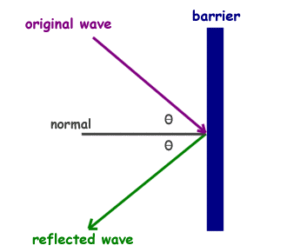What is Behavior of Light?
In physics, light is a type of electromagnetic radiation that is visible to the naked eye. Light has a unique property that can be described in physics as waves and streams of particles called photons.
Below in this page, we will provide some of the behavior of light as a wave, including reflection, refraction, and diffraction.
Reflection
One of the most important wave behaviors of light is reflection. It is the reflected light that we see with the naked eye. The way light reflects off objects also affects the colors we see.
When a wave hits a new medium, part of the wave bounces off the surface. The degree of surface reflectivity will determine how much light (and its wavelength) will be reflected and how much is absorbed or transmitted.
When light is reflected, it obeys the law of reflection in waves. This means that the angle of the reflected light wave will be equal to the incident angle of the incident light wave. See the image below for an example:
Types of Reflection
Specular reflection – A specular reflection occurs when light rays are reflected off a surface in a single direction. An example of this type of reflection is a mirror. Mirror reflections occur from flat surfaces at the microscopic level, such as polished silver or a smooth body of water.
Diffuse reflection – Diffuse reflection occurs when a surface reflects light rays in multiple directions. Diffuse reflection occurs when a surface is rough at the microscopic level. The surface may look or feel smooth, like a sheet of paper, but it’s really rough on a microscopic level. This causes the light beams to reflect at different angles.
Refraction
When light travels from one medium (like air) to another (like water), it changes direction. This is a “wave-like” behavior and is called refraction. In this way, light behaves like other waves such as sound waves. The speed of a light wave also changes as it travels from medium to medium.
You can see an example of light refraction in water if you put a straw in a glass of water. You will see how the straw seems to move sideways. This is the bending of the light wave as it enters the water.
Index of Refraction
To measure the behavior of light in different substances, scientists use the index of refraction. This gives a ratio between the speed of light in a vacuum to the speed of light in the substance. The extraction equation is:
n = c/v
where n is the refractive index, c is the speed of light in a vacuum, and v is the speed of light in the substance.
For example, take the refractive index of water to be 1.33. This means that the speed of light in a vacuum is 1.33 times faster than the speed of light in water.
Diffraction
Another wave property of light is diffraction. When light waves hit an obstacle or pass through an opening, they bend. Diffraction of light can be seen in the silver lining around clouds as well as in light patterns on the surface of a compact disc.


